 Search by Keyword
|
"OLD BROWN SHOE"
(George Harrison)
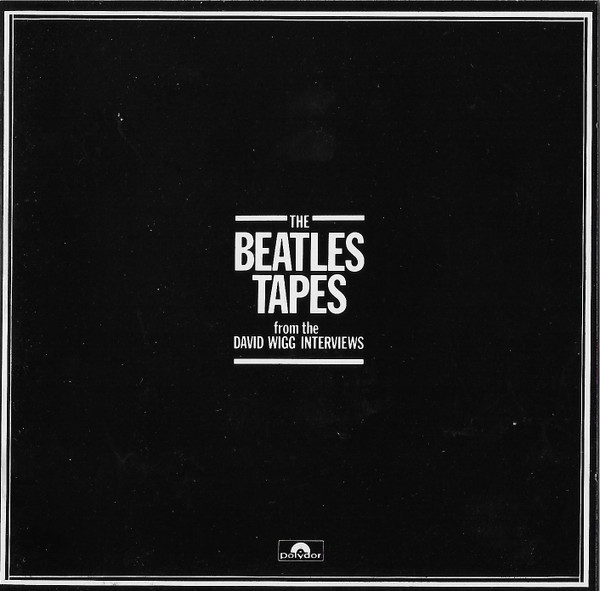 "They blessed me with a couple of b-sides in the past," George Harrison stated in an interview with David Wigg in late 1969 as heard on the 1976 album "The Beatles Tapes." Although his compositions had been featured on nearly all of The Beatles' albums, George's songs hadn't been deemed suitable even to grace the b-side of any of their singles until 1968. "I thought...that George's songs weren't that good," McCartney stated in a taped meeting from September of 1969, which prompted George to reply, "That's a matter of taste. All down the line, people have liked my songs." "They blessed me with a couple of b-sides in the past," George Harrison stated in an interview with David Wigg in late 1969 as heard on the 1976 album "The Beatles Tapes." Although his compositions had been featured on nearly all of The Beatles' albums, George's songs hadn't been deemed suitable even to grace the b-side of any of their singles until 1968. "I thought...that George's songs weren't that good," McCartney stated in a taped meeting from September of 1969, which prompted George to reply, "That's a matter of taste. All down the line, people have liked my songs."
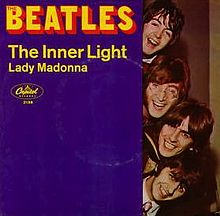 Paul did approve, however, of Harrison's “The Inner Light,” reviewing it as “one of the most commercial that George has ever written...it's really lovely.” Therefore, it was granted the coveted b-side position to Paul's “Lady Madonna,” The Beatles' March 1968 released single. Having gained the approval of Paul and producer George Martin, Harrison then landed the b-side role once again with his song “Old Brown Shoe,” opposite John's “The Ballad Of John And Yoko” for the single's June 1969 release. This time, George's song was impressive enough to also land a position on their highly successful 1973 double-album “Greatest Hits” compilation “The Beatles / 1967-1970.” Well deserved respect for a great song and a great songwriting talent! Paul did approve, however, of Harrison's “The Inner Light,” reviewing it as “one of the most commercial that George has ever written...it's really lovely.” Therefore, it was granted the coveted b-side position to Paul's “Lady Madonna,” The Beatles' March 1968 released single. Having gained the approval of Paul and producer George Martin, Harrison then landed the b-side role once again with his song “Old Brown Shoe,” opposite John's “The Ballad Of John And Yoko” for the single's June 1969 release. This time, George's song was impressive enough to also land a position on their highly successful 1973 double-album “Greatest Hits” compilation “The Beatles / 1967-1970.” Well deserved respect for a great song and a great songwriting talent!
Songwriting History
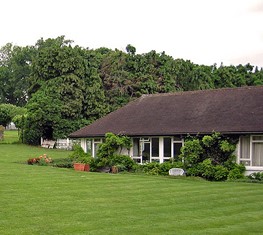 While some have claimed that George had been formulating "Old Brown Shoe" toward the end of "White Album" sessions in November of 1968, which may very well be true due to his admitted "three months before I finish one song" quote to interviewer Larry Kane in 1965, it appears that the song was considered written by its author on January 26th, 1969, undoubtedly at "Kinfauns," his Esher home in Surrey. The Beatles were in their last days of completing what became the "Get Back / Let It Be" sessions at the time, when George arrived at Apple Studios on Monday, January 27th, 1969, proclaiming that he had written a great new song the night before. While some have claimed that George had been formulating "Old Brown Shoe" toward the end of "White Album" sessions in November of 1968, which may very well be true due to his admitted "three months before I finish one song" quote to interviewer Larry Kane in 1965, it appears that the song was considered written by its author on January 26th, 1969, undoubtedly at "Kinfauns," his Esher home in Surrey. The Beatles were in their last days of completing what became the "Get Back / Let It Be" sessions at the time, when George arrived at Apple Studios on Monday, January 27th, 1969, proclaiming that he had written a great new song the night before.
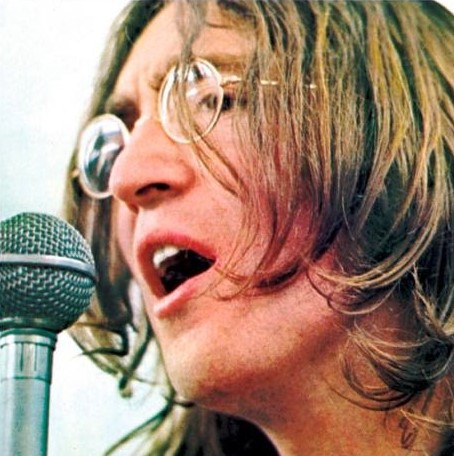 "I went to bed very late," George told the others shortly after he arrived at Apple Studios that day. "I wrote a good song actually, a different one altogether. Very exciting! Happy and a rocker! I didn't have any breakfast either. I keep thinking, oh, I'll just go to bed now and then I keep hearing your (John Lennon's) voice from about ten years ago saying, 'Finish 'em straight away, as soon as you start 'em finish 'em.' You once told me it was best to finish 'em so I just started!" After laughter subsided, John replied, "But I never do it though. I can't do it but I know it's the best." "I went to bed very late," George told the others shortly after he arrived at Apple Studios that day. "I wrote a good song actually, a different one altogether. Very exciting! Happy and a rocker! I didn't have any breakfast either. I keep thinking, oh, I'll just go to bed now and then I keep hearing your (John Lennon's) voice from about ten years ago saying, 'Finish 'em straight away, as soon as you start 'em finish 'em.' You once told me it was best to finish 'em so I just started!" After laughter subsided, John replied, "But I never do it though. I can't do it but I know it's the best."
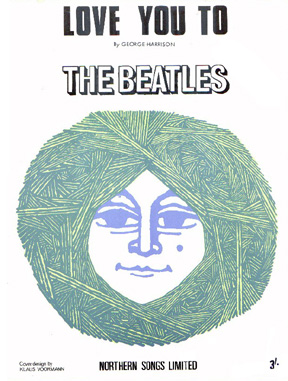 It appears that, as was many times the case, George hadn't yet come up with a title for the song. His reluctance to name his compositions stems back to 1966, as the group was deep into recording Harrison songs such as “Love You To” and “I Want To Tell You” while these tunes were only being identified by working titles for the time being. “You never had a title for any of your songs,” John was to proclaim during these sessions. It appears that, as was many times the case, George hadn't yet come up with a title for the song. His reluctance to name his compositions stems back to 1966, as the group was deep into recording Harrison songs such as “Love You To” and “I Want To Tell You” while these tunes were only being identified by working titles for the time being. “You never had a title for any of your songs,” John was to proclaim during these sessions.
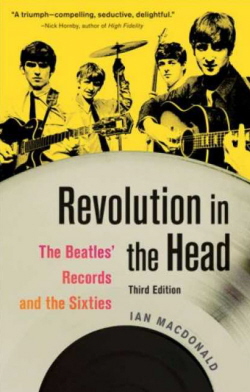 Being a proclaimed Bob Dylan fan, as were the other Beatles, George apparently based the rhythm of the song on Dylan's “Highway 61 Revisited” which, as author Ian MacDonald suggests in his book “Revolution In The Head,” was “an experiment in ska rhythm.” The Beatles had worked with this popular style of music in the past on songs such as “I Call Your Name” and “Ob-La-Di, Ob-La-Da,” but with Bob Dylan's endorsement, George appears here to have embraced it even more fully. Being a proclaimed Bob Dylan fan, as were the other Beatles, George apparently based the rhythm of the song on Dylan's “Highway 61 Revisited” which, as author Ian MacDonald suggests in his book “Revolution In The Head,” was “an experiment in ska rhythm.” The Beatles had worked with this popular style of music in the past on songs such as “I Call Your Name” and “Ob-La-Di, Ob-La-Da,” but with Bob Dylan's endorsement, George appears here to have embraced it even more fully.
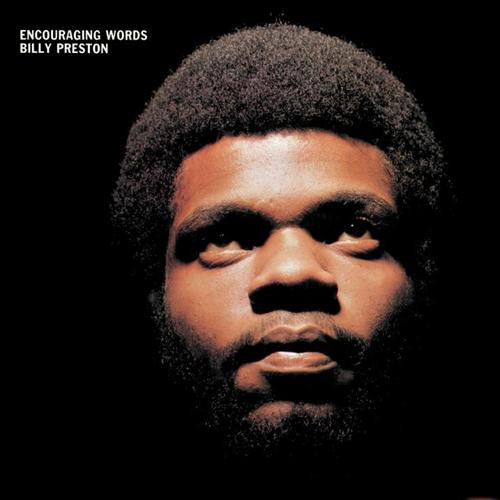 The melody of the song came first, George writing it on piano. “I started the chord sequence on the piano, which I don't really play,” he wrote in his book “I Me Mine.” When he premiered the song to his band-mates on January 27th, 1969, he first played it on piano for Billy Preston in order to teach him what the chords were. “Pianos are very difficult, aren't they?”, he exclaimed while teaching The Beatles his new composition. The melody of the song came first, George writing it on piano. “I started the chord sequence on the piano, which I don't really play,” he wrote in his book “I Me Mine.” When he premiered the song to his band-mates on January 27th, 1969, he first played it on piano for Billy Preston in order to teach him what the chords were. “Pianos are very difficult, aren't they?”, he exclaimed while teaching The Beatles his new composition.
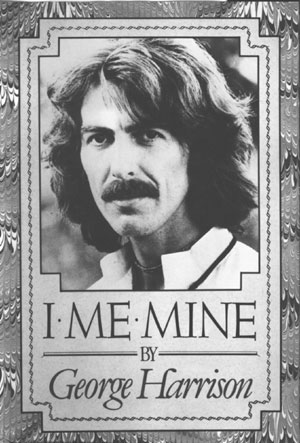 Lyrically, author Tim Riley, in his book “Tell Me Why,” describes the song as “a witty and oblique look at love with sardonic flair.” While a romantic relationship is indeed the overall subject matter of the song, George's newly acquired Eastern religious beliefs are very much to the fore. He “began writing ideas for the words from various opposites,” George continues in his book “I Me Mine.” “Again, it's the duality of things – yes no, up down, left right, right wrong, etc.” Lyrically, author Tim Riley, in his book “Tell Me Why,” describes the song as “a witty and oblique look at love with sardonic flair.” While a romantic relationship is indeed the overall subject matter of the song, George's newly acquired Eastern religious beliefs are very much to the fore. He “began writing ideas for the words from various opposites,” George continues in his book “I Me Mine.” “Again, it's the duality of things – yes no, up down, left right, right wrong, etc.”
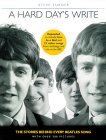 While many writers acknowledge the similarity to Paul's “Hello Goodbye” from 1967, George's intentions went much deeper than just an interesting word-play of opposites. As Steve Turner explains in his book “A Hard Day's Write,” “The lyric had its origins in George's religious view that we must free ourselves from the reality of the material world as it is illusory. Once absorbed into the divine consciousness, there would be no right verses wrong, body versus soul, spirit versus matter." Therefore, "stepping out of this old brown shoe" appears to refer to freeing oneself from the trappings of the material world, something George was keen to do at the time, given his extensive Beatle indulgences of the past few years. He's "changing faster than the weather," as he explains in the song. While many writers acknowledge the similarity to Paul's “Hello Goodbye” from 1967, George's intentions went much deeper than just an interesting word-play of opposites. As Steve Turner explains in his book “A Hard Day's Write,” “The lyric had its origins in George's religious view that we must free ourselves from the reality of the material world as it is illusory. Once absorbed into the divine consciousness, there would be no right verses wrong, body versus soul, spirit versus matter." Therefore, "stepping out of this old brown shoe" appears to refer to freeing oneself from the trappings of the material world, something George was keen to do at the time, given his extensive Beatle indulgences of the past few years. He's "changing faster than the weather," as he explains in the song.
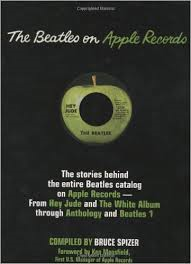 Bruce Spizer, in his book “The Beatles On Apple Records,” correctly describes the lyrics of “Old Brown Shoe” as “a rocking extension of the Eastern Philosophy of yin-yang.” The result is displayed in each verse of the song with lyrics such as “I want a love that's right, but right is only half of what's wrong,” and a description of a “short haired girl” who “sometimes wears it twice as long.” Later verses combine the opposites “pick me up” with “drag me down,” “smile” with “frown,” “love” with “hate,” and “early start” with “late." He then appears to give a slight nod to Ringo in one of the song's bridges, stating, "If I grow up, I'll be a singer / wearing rings on every finger." Bruce Spizer, in his book “The Beatles On Apple Records,” correctly describes the lyrics of “Old Brown Shoe” as “a rocking extension of the Eastern Philosophy of yin-yang.” The result is displayed in each verse of the song with lyrics such as “I want a love that's right, but right is only half of what's wrong,” and a description of a “short haired girl” who “sometimes wears it twice as long.” Later verses combine the opposites “pick me up” with “drag me down,” “smile” with “frown,” “love” with “hate,” and “early start” with “late." He then appears to give a slight nod to Ringo in one of the song's bridges, stating, "If I grow up, I'll be a singer / wearing rings on every finger."
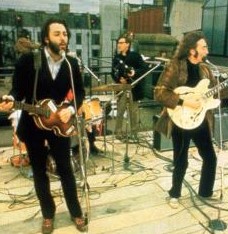 Although, as detailed below, The Beatles put much effort into rehearsing the song during the final days of January 1969 just before their famous rooftop concert, it was decided that they would shelve the song for the time being so that it could be worked out more efficiently in the near future. For this we can be grateful, since the end result three months later, with various overdubs, worked very nicely to perfect the recording, overdubbing being something they were trying to avoid during the “Get Back / Let It Be” sessions. Although, as detailed below, The Beatles put much effort into rehearsing the song during the final days of January 1969 just before their famous rooftop concert, it was decided that they would shelve the song for the time being so that it could be worked out more efficiently in the near future. For this we can be grateful, since the end result three months later, with various overdubs, worked very nicely to perfect the recording, overdubbing being something they were trying to avoid during the “Get Back / Let It Be” sessions.
Recording History
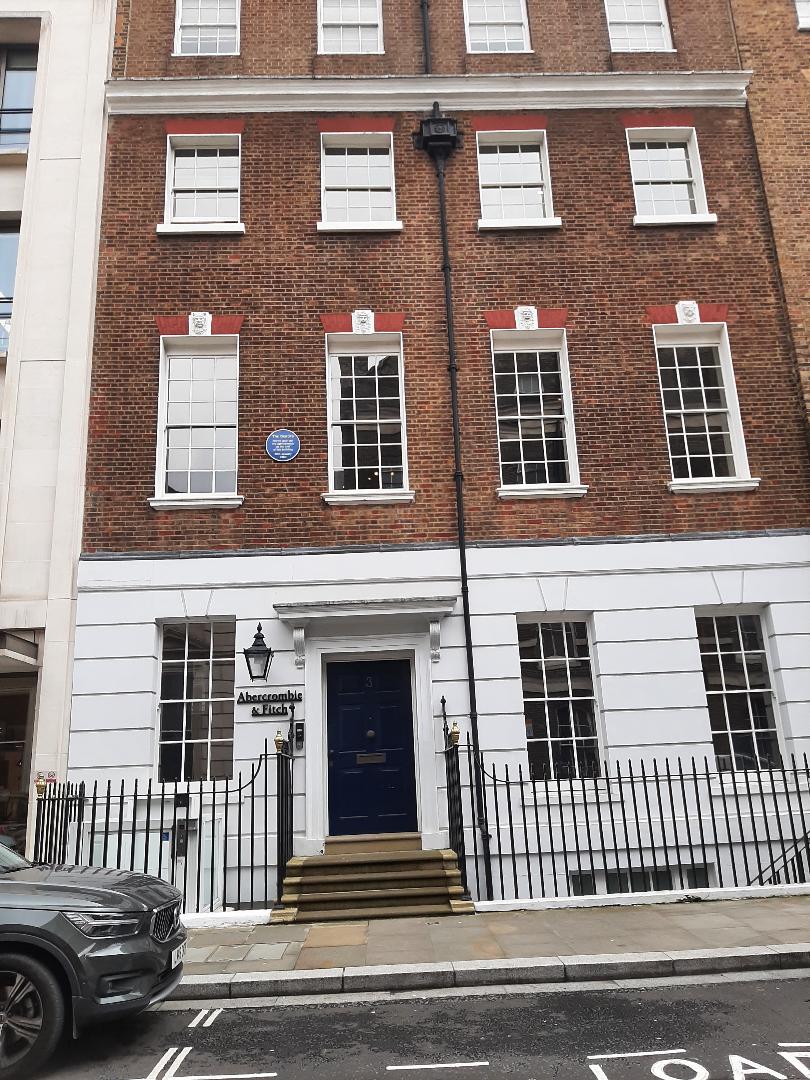 As stated above, George premiered the song to The Beatles and Billy Preston at Apple Studios on January 27th, 1969, during their later sessions for the "Get Back / Let It Be" project. This event was documented in Peter Jackson's 2021 "Get Back" series, which shows George excitedly demonstrating the song on piano for the others to hear while Paul approvingly dances behind him before moving over to play rudimentary drums to the song using brushes. After discussing with Billy Preston the identity of certain chords, Ringo contributes a bit of electric piano to this rehearsal until Paul relinquishes the drums. While John is busy helping others load in musical equipment, Paul, strangely, moves to George's newly acquired Rosewood Telecaster to play some lead guitar runs left handed with the guitar upside down, while Billy Preston plays John's Fender Bass VI and Ringo moves to drums. The four of them actually start working on the arrangement of this brand new song while Ringo begins experimenting with a suitable galloping drum beat. As the rehearsal continued, Billy Preston came in on organ, which prompted George's above mentioned comment, "Pianos are very difficult, aren't they?" As stated above, George premiered the song to The Beatles and Billy Preston at Apple Studios on January 27th, 1969, during their later sessions for the "Get Back / Let It Be" project. This event was documented in Peter Jackson's 2021 "Get Back" series, which shows George excitedly demonstrating the song on piano for the others to hear while Paul approvingly dances behind him before moving over to play rudimentary drums to the song using brushes. After discussing with Billy Preston the identity of certain chords, Ringo contributes a bit of electric piano to this rehearsal until Paul relinquishes the drums. While John is busy helping others load in musical equipment, Paul, strangely, moves to George's newly acquired Rosewood Telecaster to play some lead guitar runs left handed with the guitar upside down, while Billy Preston plays John's Fender Bass VI and Ringo moves to drums. The four of them actually start working on the arrangement of this brand new song while Ringo begins experimenting with a suitable galloping drum beat. As the rehearsal continued, Billy Preston came in on organ, which prompted George's above mentioned comment, "Pianos are very difficult, aren't they?"
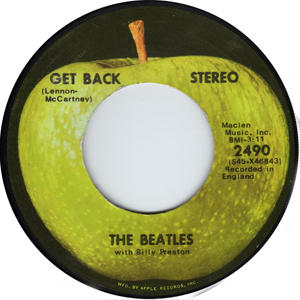 While they did start to get a good feel for his new composition, they recognized that they should press on further with songs they had been working on previously, such as "Let It Be," "The Long And Winding Road," "Don't Let Me Down" and "I've Got A Feeling." They also ended up laying down the definitive version of the song “Get Back” on this day, the recording which would soon be released as their next single (minus the coda which was recorded the following day), leaving the refinement of “Old Brown Shoe” for another day. While they did start to get a good feel for his new composition, they recognized that they should press on further with songs they had been working on previously, such as "Let It Be," "The Long And Winding Road," "Don't Let Me Down" and "I've Got A Feeling." They also ended up laying down the definitive version of the song “Get Back” on this day, the recording which would soon be released as their next single (minus the coda which was recorded the following day), leaving the refinement of “Old Brown Shoe” for another day.
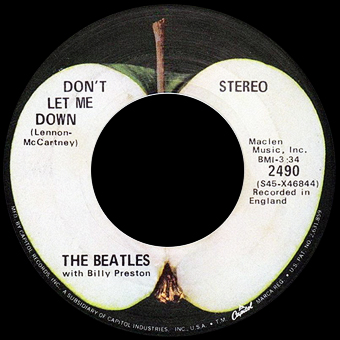 The following day at Apple Studios, January 28th, 1969, was the next session where further refining of "Old Brown Shoe" took place. After much work on “I've Got A Feeling” and other songs, including the basis for the released recording of “Don't Let Me Down,” The Beatles and Billy Preston worked extensively on “Old Brown Shoe,” running through the song eight times while Paul was away for an appointment. The following day at Apple Studios, January 28th, 1969, was the next session where further refining of "Old Brown Shoe" took place. After much work on “I've Got A Feeling” and other songs, including the basis for the released recording of “Don't Let Me Down,” The Beatles and Billy Preston worked extensively on “Old Brown Shoe,” running through the song eight times while Paul was away for an appointment.
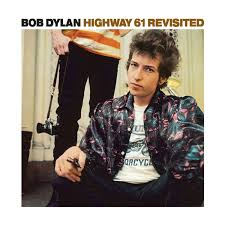 George started out on piano again, this time teaching the chords to John for him to play on guitar. Ringo had by now adopted the drum beat reminiscent of Bob Dylan's “Highway 61 Revisited” as he eventually played on the finished song, although he stumbled from time to time during the verses and resorted to a triplet snare beat in the bridges not unlike what he plays in “Get Back.” A change in instruments happens sometime during the proceedings, Billy Preston replacing George on piano, thus freeing up the composer to just sing lead vocals and then to play lead guitar as well. Harrison joked that he now needed to teach himself the song again on this instrument, formulating some of the guitar riffs that we hear on the finished recording in the process. John then abandoned his guitar for an Omnichord, which is an instrument that sounds somewhat like an organ. George started out on piano again, this time teaching the chords to John for him to play on guitar. Ringo had by now adopted the drum beat reminiscent of Bob Dylan's “Highway 61 Revisited” as he eventually played on the finished song, although he stumbled from time to time during the verses and resorted to a triplet snare beat in the bridges not unlike what he plays in “Get Back.” A change in instruments happens sometime during the proceedings, Billy Preston replacing George on piano, thus freeing up the composer to just sing lead vocals and then to play lead guitar as well. Harrison joked that he now needed to teach himself the song again on this instrument, formulating some of the guitar riffs that we hear on the finished recording in the process. John then abandoned his guitar for an Omnichord, which is an instrument that sounds somewhat like an organ.
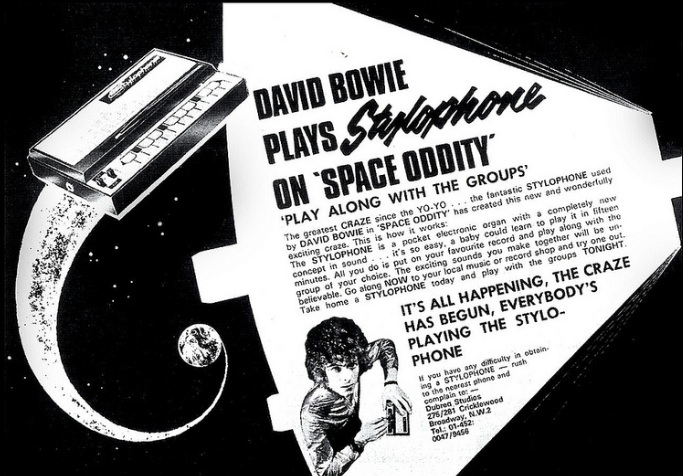 Another interesting musical instrument in the studio on this day was a Stylophone, which George and Billy Preston experimented with in between rehearsals of “Old Brown Shoe.” The Beatles never used the instrument on any song in their catalog, but it did famously get used five months later at Trident Studios in London on David Bowie's classic “Space Oddity.” Nontheless, on this day, The Beatles worked on two other Harrison compositions, “Something” and “All Things Must Pass,” as well as other songs, before retiring for the evening. Another interesting musical instrument in the studio on this day was a Stylophone, which George and Billy Preston experimented with in between rehearsals of “Old Brown Shoe.” The Beatles never used the instrument on any song in their catalog, but it did famously get used five months later at Trident Studios in London on David Bowie's classic “Space Oddity.” Nontheless, on this day, The Beatles worked on two other Harrison compositions, “Something” and “All Things Must Pass,” as well as other songs, before retiring for the evening.
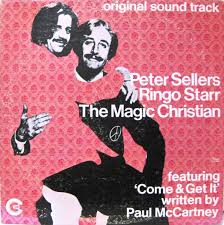 The following day, January 29th, 1969, did see one more rehearsal of “Old Brown Shoe” for the “Get Back / Let It Be” project. With Ringo needing to start filming his role in Peter Seller's movie “The Magic Christian” at the beginning of February, the whole Beatles project needed to be completed in the next two days. Therefore, on this day, they decided to hash through the recently offered George Harrison compositions in consideration of one of them being suitably developed for inclusion in the proposed "Get Back / Let It Be" documentary film. In addition to a quick runthrough of “Old Brown Shoe,” they rehearsed “All Things Must Pass,” “Let It Down, “ “Something” and “For You Blue.” This last song was eventually chosen, the rhythm track for the released version already having been recorded on January 25th. Interestingly, George's “I Me Mine,” which did briefly make it into the film in a very rough state, was apparently deemed unsuitable on this day and not even considered. The following day, January 29th, 1969, did see one more rehearsal of “Old Brown Shoe” for the “Get Back / Let It Be” project. With Ringo needing to start filming his role in Peter Seller's movie “The Magic Christian” at the beginning of February, the whole Beatles project needed to be completed in the next two days. Therefore, on this day, they decided to hash through the recently offered George Harrison compositions in consideration of one of them being suitably developed for inclusion in the proposed "Get Back / Let It Be" documentary film. In addition to a quick runthrough of “Old Brown Shoe,” they rehearsed “All Things Must Pass,” “Let It Down, “ “Something” and “For You Blue.” This last song was eventually chosen, the rhythm track for the released version already having been recorded on January 25th. Interestingly, George's “I Me Mine,” which did briefly make it into the film in a very rough state, was apparently deemed unsuitable on this day and not even considered.
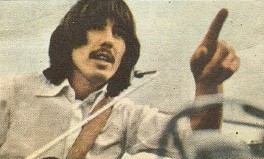 This also became the fate of “Old Brown Shoe” at this stage of the game. They did decide on this day, however, that they would rehearse a group of songs they did feel comfortable with in preperation for the performance that would occur on the roof of the Apple building the following day, January 30th, 1969. After these songs were rehearsed, they rifled through many other oldies and underdeveloped songs before they called it for the day. This also became the fate of “Old Brown Shoe” at this stage of the game. They did decide on this day, however, that they would rehearse a group of songs they did feel comfortable with in preperation for the performance that would occur on the roof of the Apple building the following day, January 30th, 1969. After these songs were rehearsed, they rifled through many other oldies and underdeveloped songs before they called it for the day.
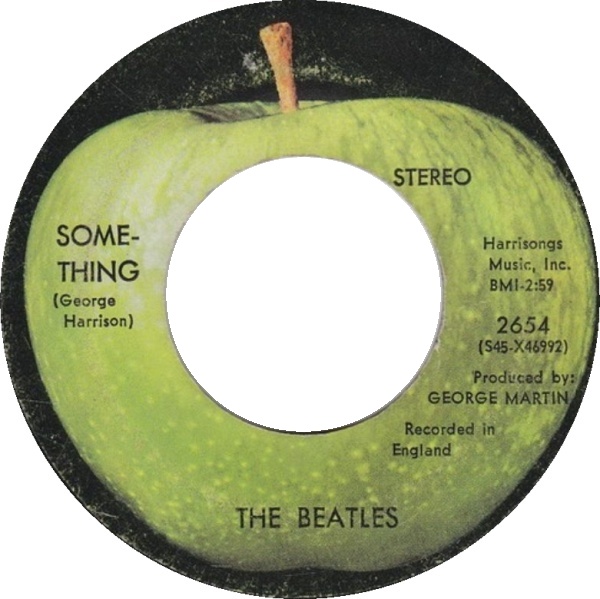 “Old Brown Shoe” having been put on the back burner as far as The Beatles were concerned, it was up to George to bring it to the fore again in the future. Apparently to treat himself on his 26th birthday, February 25th, 1969, George met with engineer Ken Scott at EMI Studios (time and studio unknown) to record three demos of recently written songs. He chose to record “All Things Must Pass,” “Something” and “Old Brown Shoe,” the latter song being the most elaborately recorded of the three. “Old Brown Shoe” having been put on the back burner as far as The Beatles were concerned, it was up to George to bring it to the fore again in the future. Apparently to treat himself on his 26th birthday, February 25th, 1969, George met with engineer Ken Scott at EMI Studios (time and studio unknown) to record three demos of recently written songs. He chose to record “All Things Must Pass,” “Something” and “Old Brown Shoe,” the latter song being the most elaborately recorded of the three.
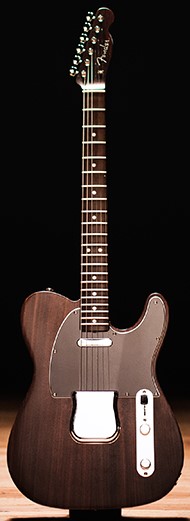 George first recorded himself singing the song while playing piano on track one of the four-track tape. He then added an electric rhythm guitar overdub throughout the song on track two that focused on the lower-pitched strings while incorporating an impressive repeating ascending-and-descending riff that was eventually incorporated into the bridge of the final recording. This was followed by a further electric guitar part on the higher strings as a solo during the instrumental verse as well as a suitable guitar part during the conclusion on track four. As included on “Anthology 3,” it is an excellent performance that, one can only imagine, could have been accentuated further with Ringo on drums, Paul on bass, and backing vocals from Paul and John to create an impressive finished song on the eight track tape. However, this was kept only for posterity and, possibly, to reacquaint his bandmates with how he wanted the song to sound when they recorded it as a band. George first recorded himself singing the song while playing piano on track one of the four-track tape. He then added an electric rhythm guitar overdub throughout the song on track two that focused on the lower-pitched strings while incorporating an impressive repeating ascending-and-descending riff that was eventually incorporated into the bridge of the final recording. This was followed by a further electric guitar part on the higher strings as a solo during the instrumental verse as well as a suitable guitar part during the conclusion on track four. As included on “Anthology 3,” it is an excellent performance that, one can only imagine, could have been accentuated further with Ringo on drums, Paul on bass, and backing vocals from Paul and John to create an impressive finished song on the eight track tape. However, this was kept only for posterity and, possibly, to reacquaint his bandmates with how he wanted the song to sound when they recorded it as a band.
 About seven weeks later, on April 16th, 1969, George appeared in EMI Studio Three between 2:30 and 5 pm to record yet another demo of “Old Brown Shoe” in anticipation of the full band convening at 7 pm that day to properly record the song. With producer George Martin in tow, along with engineers Phil McDonald and Richard Lush, this second Harrison demo of the song has yet to surface on any release, official or bootleg. It can be easily assumed it features George once again on piano and vocals. Mark Lewisohn's “The Beatles Recording Sessions” book intimates that this demo was recorded over once the rest of the band arrived on that day, but discoveries have come to light in the past to prove similar statements untrue. Only time will tell. About seven weeks later, on April 16th, 1969, George appeared in EMI Studio Three between 2:30 and 5 pm to record yet another demo of “Old Brown Shoe” in anticipation of the full band convening at 7 pm that day to properly record the song. With producer George Martin in tow, along with engineers Phil McDonald and Richard Lush, this second Harrison demo of the song has yet to surface on any release, official or bootleg. It can be easily assumed it features George once again on piano and vocals. Mark Lewisohn's “The Beatles Recording Sessions” book intimates that this demo was recorded over once the rest of the band arrived on that day, but discoveries have come to light in the past to prove similar statements untrue. Only time will tell.
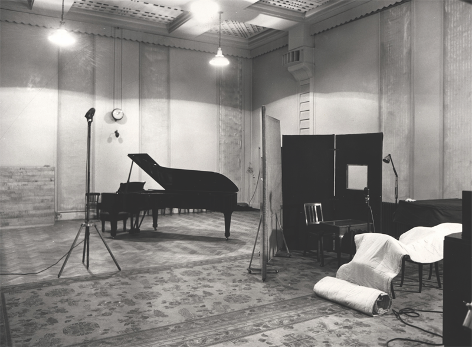 At 7 pm, The Beatles recorded four takes of the rhythm track in EMI Studio Three which, in essence, means that there were three “take one” recordings of the song at EMI Studios in 1969: George's demo on February 25th, George's demo on this day (April 16th), and the first rhythm track recorded this same evening. This “take one,” however, broke down before the song's conclusion. The rest of the four takes show that The Beatles were well acquainted with the song by this time. At 7 pm, The Beatles recorded four takes of the rhythm track in EMI Studio Three which, in essence, means that there were three “take one” recordings of the song at EMI Studios in 1969: George's demo on February 25th, George's demo on this day (April 16th), and the first rhythm track recorded this same evening. This “take one,” however, broke down before the song's conclusion. The rest of the four takes show that The Beatles were well acquainted with the song by this time.
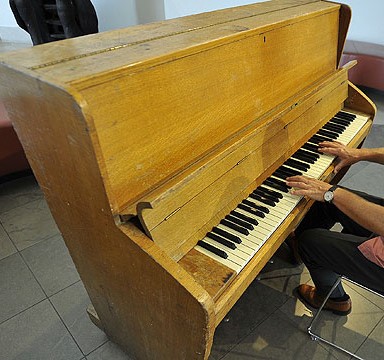 "Take two," which was included in the "Super Deluxe" 50th Anniversary edition of "Abbey Road," was complete, as were "take three" and "take four." The instrumentation here shows three Beatles: Ringo on drums on track one, George's guide vocals on track two, Paul on electric guitar on track three, and George on “jangle box” on track four, this instrument also refered to as “tack piano.” Andy Babiuk's book “Beatles Gear” explains that a "jangle box" was a modified upright piano. "The instrument's hammers were brushed with cellulose, which then dried hard, and some of its strings were re-tuned. The result was a percussive, jangling piano sound.” "Take two," which was included in the "Super Deluxe" 50th Anniversary edition of "Abbey Road," was complete, as were "take three" and "take four." The instrumentation here shows three Beatles: Ringo on drums on track one, George's guide vocals on track two, Paul on electric guitar on track three, and George on “jangle box” on track four, this instrument also refered to as “tack piano.” Andy Babiuk's book “Beatles Gear” explains that a "jangle box" was a modified upright piano. "The instrument's hammers were brushed with cellulose, which then dried hard, and some of its strings were re-tuned. The result was a percussive, jangling piano sound.”
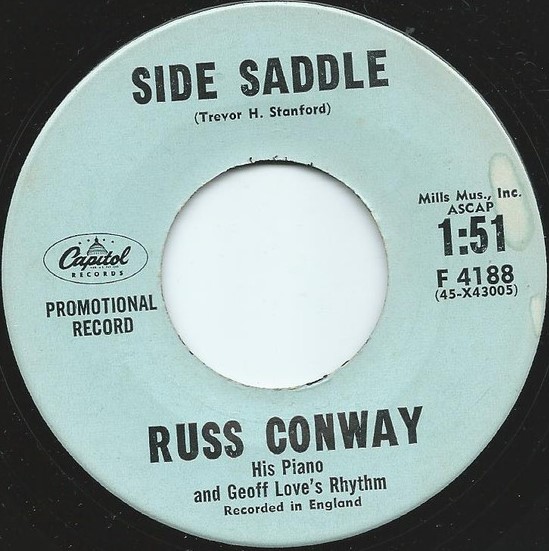 Popular pianist Russ Conway recorded many of his hits at EMI Studios using this piano sound, such as “Side Saddle” from 1959, and The Beatles worked at achieving this “jangling” sound as well. Author Kevin Howlett, in the "Track By Track" section of the "Super Deluxe" edition of "Abbey Road," asserts that John played the "jangle box" piano on "Old Brown Shoe" but, Mark Lewisohn's "The Beatles Recording Sessions" book insists, John played rhythm guitar on the song for "take four," which was used for the finished recording, apparently on track eight of the eight-track tape. Since only three musicians are heard on "take two," as witnessed on the "Super Deluxe Abbey Road" release, we can either conclude that John arrived late for the recording session on this day, or the track that contained John's guitar was not included in the mix that Giles Martin made for this 2019 release. Popular pianist Russ Conway recorded many of his hits at EMI Studios using this piano sound, such as “Side Saddle” from 1959, and The Beatles worked at achieving this “jangling” sound as well. Author Kevin Howlett, in the "Track By Track" section of the "Super Deluxe" edition of "Abbey Road," asserts that John played the "jangle box" piano on "Old Brown Shoe" but, Mark Lewisohn's "The Beatles Recording Sessions" book insists, John played rhythm guitar on the song for "take four," which was used for the finished recording, apparently on track eight of the eight-track tape. Since only three musicians are heard on "take two," as witnessed on the "Super Deluxe Abbey Road" release, we can either conclude that John arrived late for the recording session on this day, or the track that contained John's guitar was not included in the mix that Giles Martin made for this 2019 release.
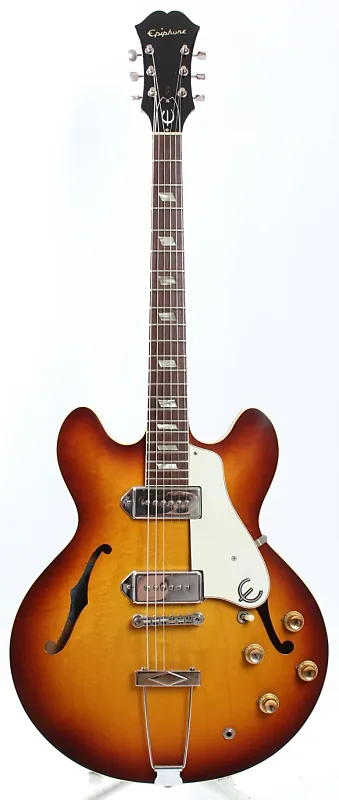 Also of interest here is Paul's guitar work, which contains an interesting guitar riff (possibly written by Paul) in the first half of each verse, his playing in the second half of each verse consisting of a striking rhythm part. Paul then plays the ascending-and-descending riffs in the bridges that George played on his February 25th, 1969 demo, the composer apparently teaching this to McCartney. The conclusion of "take two" shows Paul reverting back to the striking rhythm playing, a decision being made to replace this with his repeating guitar riff by the time they recorded the released "take four." Author Kevin Howlett also asserts that it was George that played the guitar on the rhythm track of "Old Brown Shoe," but many documented musicians note that singing guide vocals while performing the ascending-and-descending guitar riff in the bridges of the song are next to impossible. Since George wrote "Old Brown Shoe" on piano and can be witnessed on many occassions prior to this day performing the song on this instrument in an identical fashion, a reasonable conclusion can be made that it is indeed George Harrison playing the piano on the released version as laid down on the rhythm track. Also of interest here is Paul's guitar work, which contains an interesting guitar riff (possibly written by Paul) in the first half of each verse, his playing in the second half of each verse consisting of a striking rhythm part. Paul then plays the ascending-and-descending riffs in the bridges that George played on his February 25th, 1969 demo, the composer apparently teaching this to McCartney. The conclusion of "take two" shows Paul reverting back to the striking rhythm playing, a decision being made to replace this with his repeating guitar riff by the time they recorded the released "take four." Author Kevin Howlett also asserts that it was George that played the guitar on the rhythm track of "Old Brown Shoe," but many documented musicians note that singing guide vocals while performing the ascending-and-descending guitar riff in the bridges of the song are next to impossible. Since George wrote "Old Brown Shoe" on piano and can be witnessed on many occassions prior to this day performing the song on this instrument in an identical fashion, a reasonable conclusion can be made that it is indeed George Harrison playing the piano on the released version as laid down on the rhythm track.
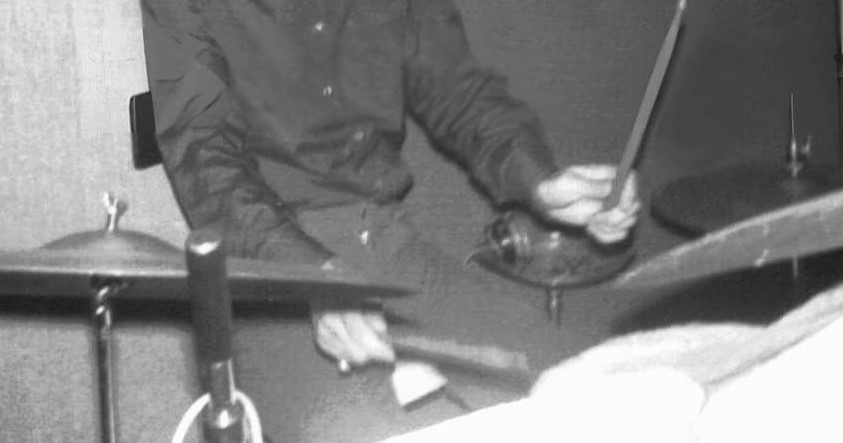 Also worthy of mention here is the additional assertion by Kevin Howlett that the drums on the official recording of "Old Brown Shoe" were performed by Paul. While Ringo was indeed in the process of filming the movie "The Magic Christian" at the time, it was primarily filmed on location in London, which would make him available for this evening's Beatles recording session. Upon listening to the late January "Get Back / Let It Be" rehearsals of "Old Brown Shoe," Ringo's drum performances developed quite closely to what we hear on the rhythm track as recorded on April 16th of that year. Paul's rudimentary drum-work, as witnessed on "The Ballad Of John And Yoko," "Dear Prudence" and "Back In The U.S.S.R.," the latter song being a composite of Paul, John and George playing drums by the use of overdubs, appears to not be of the caliber of what we hear on the released "Old Brown Shoe." "Anything I really can't do is 'shuffles,'" Paul himself admitted during a filmed interview in the '90s concerning his drumming ability. "They're difficult to do. That's just the coordination I can't do...But I can do more of just a straight sort of rock (beat)," which he then demonstrates for the cameras. Therefore, it appears most likely that Ringo broke away from his acting duties to join The Beatles for this April evening's recording session, something George Harrison would undoubtedly have preferred for recording one of his songs. Also worthy of mention here is the additional assertion by Kevin Howlett that the drums on the official recording of "Old Brown Shoe" were performed by Paul. While Ringo was indeed in the process of filming the movie "The Magic Christian" at the time, it was primarily filmed on location in London, which would make him available for this evening's Beatles recording session. Upon listening to the late January "Get Back / Let It Be" rehearsals of "Old Brown Shoe," Ringo's drum performances developed quite closely to what we hear on the rhythm track as recorded on April 16th of that year. Paul's rudimentary drum-work, as witnessed on "The Ballad Of John And Yoko," "Dear Prudence" and "Back In The U.S.S.R.," the latter song being a composite of Paul, John and George playing drums by the use of overdubs, appears to not be of the caliber of what we hear on the released "Old Brown Shoe." "Anything I really can't do is 'shuffles,'" Paul himself admitted during a filmed interview in the '90s concerning his drumming ability. "They're difficult to do. That's just the coordination I can't do...But I can do more of just a straight sort of rock (beat)," which he then demonstrates for the cameras. Therefore, it appears most likely that Ringo broke away from his acting duties to join The Beatles for this April evening's recording session, something George Harrison would undoubtedly have preferred for recording one of his songs.
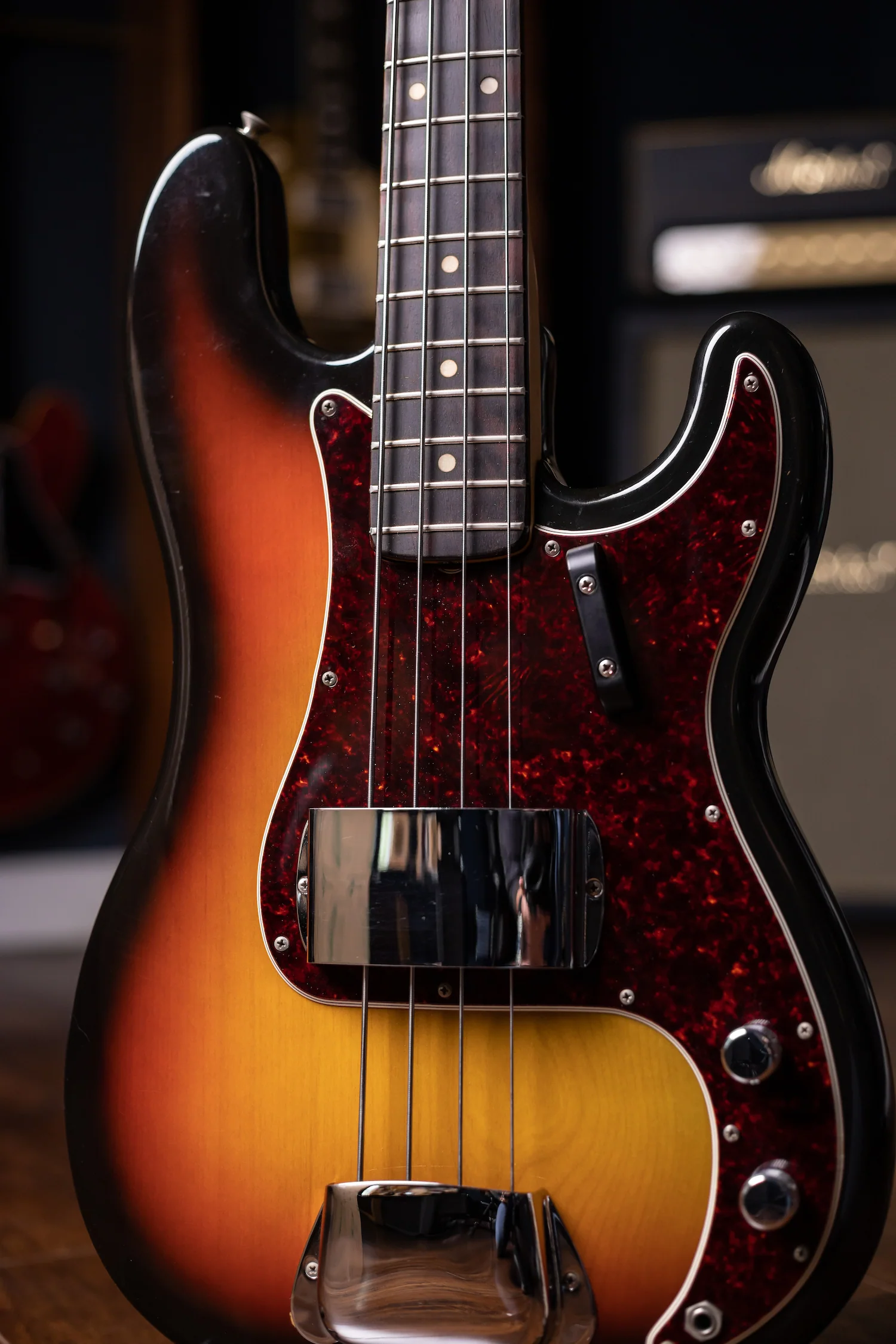 "Take four” met with everyone's satisfaction at that time, Paul reprising his identifiable guitar riff during the song's conclusion as mentioned above. Onto track six of the tape, George overdubbed the identifiable guitar riffs that Paul played on the rhythm track. Simultaneous to this, McCartney added his bass guitar part on this track using a Fender Jazz Bass, this performance mimicking the impressive ascending-and-descending riffs he played on guitar during the rhythm track. During a 1987 interview for Creem Magaine, interviewer J. Kordosh remarked that the bass playing on this song "sounds like McCartney was going nuts again," which prompted George to reply, "That was me going nuts...doing exactly what I do on guitar," referring to Paul mimicking what George wrote and performed on his February 25th solo demo of the song. George then re-recorded his lead vocals onto track two while huddling himself into a small corner of EMI Studio Three in order to create a "tight but natural echo,” as Mark Lewisohn describes it in “The Beatles Recording Sessions." John and Paul also sang some harmony vocals on track two along with George, all of this being deliberately distorted by engineer Jeff Jarratt. "Take four” met with everyone's satisfaction at that time, Paul reprising his identifiable guitar riff during the song's conclusion as mentioned above. Onto track six of the tape, George overdubbed the identifiable guitar riffs that Paul played on the rhythm track. Simultaneous to this, McCartney added his bass guitar part on this track using a Fender Jazz Bass, this performance mimicking the impressive ascending-and-descending riffs he played on guitar during the rhythm track. During a 1987 interview for Creem Magaine, interviewer J. Kordosh remarked that the bass playing on this song "sounds like McCartney was going nuts again," which prompted George to reply, "That was me going nuts...doing exactly what I do on guitar," referring to Paul mimicking what George wrote and performed on his February 25th solo demo of the song. George then re-recorded his lead vocals onto track two while huddling himself into a small corner of EMI Studio Three in order to create a "tight but natural echo,” as Mark Lewisohn describes it in “The Beatles Recording Sessions." John and Paul also sang some harmony vocals on track two along with George, all of this being deliberately distorted by engineer Jeff Jarratt.
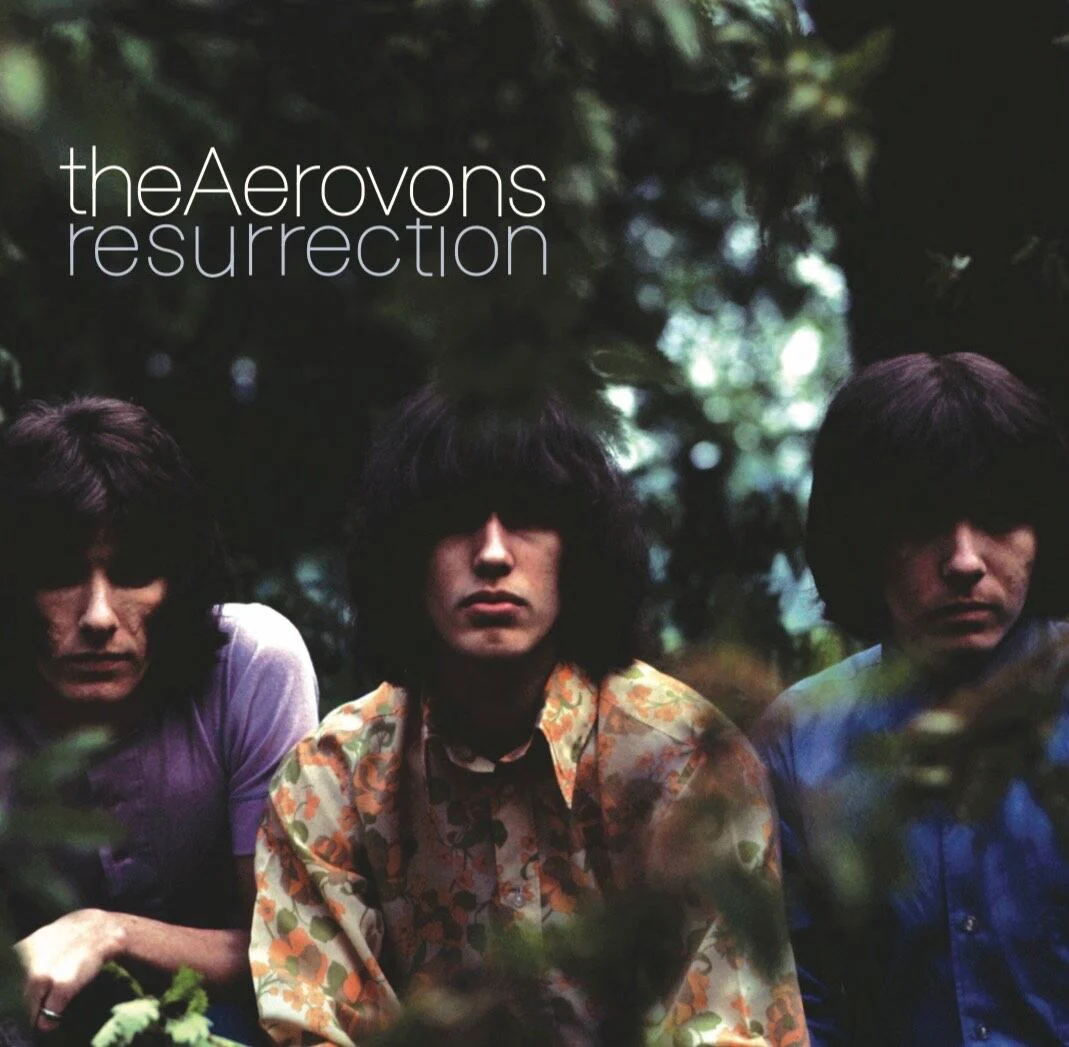 Another overdub recorded on this day was John and Paul recording backing vocals (and assorted screams during the solo section of the song) onto track five with distortion added, which was secretly witnessed by 17-year-old Tom Hartman of the group The Aerovons on this day. As related in Andy Babiuk's book “Beatles Gear,” this young group got the opportunity to record at EMI Studios in April of 1969, the same day that The Beatles were recording “Old Brown Shoe.” The group was instructed to store their equipment in a small storeroom that had “once been a control room and thus had a window that looked into Studio Three.” While their band was recording on this day, they overheard The Beatles recording in Studio Three and decided to sneak into to that storeroom because they “could not help but take a peek through the curtained window. They saw the group around a microphone, repeatedly singing, 'Who knows baby, you may comfort me...,' trying for the perfect take.” Another overdub recorded on this day was John and Paul recording backing vocals (and assorted screams during the solo section of the song) onto track five with distortion added, which was secretly witnessed by 17-year-old Tom Hartman of the group The Aerovons on this day. As related in Andy Babiuk's book “Beatles Gear,” this young group got the opportunity to record at EMI Studios in April of 1969, the same day that The Beatles were recording “Old Brown Shoe.” The group was instructed to store their equipment in a small storeroom that had “once been a control room and thus had a window that looked into Studio Three.” While their band was recording on this day, they overheard The Beatles recording in Studio Three and decided to sneak into to that storeroom because they “could not help but take a peek through the curtained window. They saw the group around a microphone, repeatedly singing, 'Who knows baby, you may comfort me...,' trying for the perfect take.”
 After these overdubs were complete, The Beatles began recording yet another George Harrison composition, namely the beautiful “Something.” After 13 takes of this second song, three attempts at a stereo mix of “take four” of “Old Brown Shoe” were made by producer George Martin and engineers Jeff Jarratt and Richard Lush. Since Britain's New Musical Express magazine stated that "four more tracks are needed" by The Beatles to create their next album, this being what would have been what we know as "Let It Be," we could easily assume that "Old Brown Shoe" may very well have been a contender for that album if it was released in mid 1969. This, of course, was not to be. Meanwhile, the third stereo mix of "Old Brown Shoe" was deemed “best,” which ended the session at 2:45 am the following morning. After these overdubs were complete, The Beatles began recording yet another George Harrison composition, namely the beautiful “Something.” After 13 takes of this second song, three attempts at a stereo mix of “take four” of “Old Brown Shoe” were made by producer George Martin and engineers Jeff Jarratt and Richard Lush. Since Britain's New Musical Express magazine stated that "four more tracks are needed" by The Beatles to create their next album, this being what would have been what we know as "Let It Be," we could easily assume that "Old Brown Shoe" may very well have been a contender for that album if it was released in mid 1969. This, of course, was not to be. Meanwhile, the third stereo mix of "Old Brown Shoe" was deemed “best,” which ended the session at 2:45 am the following morning.
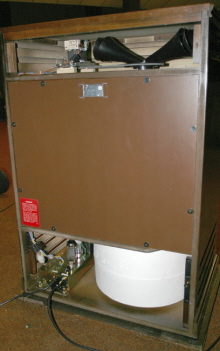 However, George decided that “Old Brown Shoe” could be improved upon. Therefore, two days later, on April 18th, 1969, George arrived at EMI Studio Three once again at 2:30 pm to finish off the song once and for all. Photographic evidence shows John was also present on this day, although he apparently didn't contribute to the recording at all. With Chris Thomas acting as producer, George overdubbed his distinctive lead guitar solo during the instrumental verse of the song onto track seven using his Fender Telecaster played through a Leslie speaker treated with ADT (“Artificial Double Tracking”) to create a fullness. However, George decided that “Old Brown Shoe” could be improved upon. Therefore, two days later, on April 18th, 1969, George arrived at EMI Studio Three once again at 2:30 pm to finish off the song once and for all. Photographic evidence shows John was also present on this day, although he apparently didn't contribute to the recording at all. With Chris Thomas acting as producer, George overdubbed his distinctive lead guitar solo during the instrumental verse of the song onto track seven using his Fender Telecaster played through a Leslie speaker treated with ADT (“Artificial Double Tracking”) to create a fullness.
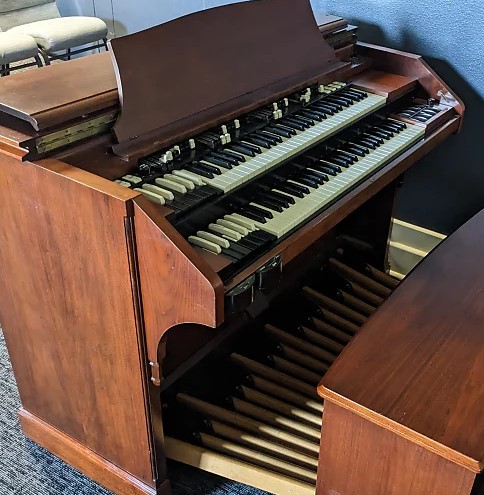 He then overdubbed a Hammond Organ part onto track eight, which possibly contained John's rhythm guitar from the rhythm track that was recorded two days earlier (April 16th, 1969), erasing Lennon's performance in the process because they had run out of open tracks on the eight-track tape. If this was the case, George apparently felt that John's rhythm guitar wasn't as important to the overall sound that he wanted on the song, relegating John's only performance on the finished track to backing vocals. These overdubs were completed by 10:30 pm, thus concluding the recording of “Old Brown Shoe” to George's satisfaction. He then overdubbed a Hammond Organ part onto track eight, which possibly contained John's rhythm guitar from the rhythm track that was recorded two days earlier (April 16th, 1969), erasing Lennon's performance in the process because they had run out of open tracks on the eight-track tape. If this was the case, George apparently felt that John's rhythm guitar wasn't as important to the overall sound that he wanted on the song, relegating John's only performance on the finished track to backing vocals. These overdubs were completed by 10:30 pm, thus concluding the recording of “Old Brown Shoe” to George's satisfaction.
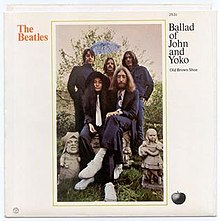 George then spent the next two-and-a-half hours, from 10:30 pm to 1 am the following morning, perfecting a stereo mix of the song in the control room of EMI Studio Three, mono mixes being deemed redundant by 1969. George and producer Chris Thomas, along with engineers Jeff Jarratt and John Kurlander, created 19 new stereo mixes of “Old Brown Shoe,” numbered five through 23, to get a suitable stereo mix. "Remix 23" was the keeper, which was readied for quick release as the b-side to John's recently recorded “The Ballad Of John And Yoko,” which John wanted to be released immediately. Afterwards, this now being 1 am on April 19th, 1969, George joined John in EMI Studio Two for overdubbing multiple guitars onto John's “I Want You (She's So Heavy)” to create a massive guitar sound at the conclusion of the song. George then spent the next two-and-a-half hours, from 10:30 pm to 1 am the following morning, perfecting a stereo mix of the song in the control room of EMI Studio Three, mono mixes being deemed redundant by 1969. George and producer Chris Thomas, along with engineers Jeff Jarratt and John Kurlander, created 19 new stereo mixes of “Old Brown Shoe,” numbered five through 23, to get a suitable stereo mix. "Remix 23" was the keeper, which was readied for quick release as the b-side to John's recently recorded “The Ballad Of John And Yoko,” which John wanted to be released immediately. Afterwards, this now being 1 am on April 19th, 1969, George joined John in EMI Studio Two for overdubbing multiple guitars onto John's “I Want You (She's So Heavy)” to create a massive guitar sound at the conclusion of the song.
 Sometime in 2019, George Martin's son Giles Martin, along with engineer Sam Okell, returned to the master tape of "Old Brown Shoe" to create a stereo mix of "take two" for inclusion on various 50th Anniversary editions of "Abbey Road." Giles Martin was then given the task in 2023 of creating a "demix remix" of "Old Brown Shoe" for inclusion on the 50th Anniversary edition of the compilation album "The Beatles / 1967 - 1970" (aka "The Blue Album"). With Peter Jackson's AI technology at his disposal, Giles Martin was able to utilize this "new machine-learning techology" so that "individual elements that were put to tape...and were therefore impossible to separate" could be "untangled, allowing Giles to put the original recordings back together with even greater clarity and impact," as stated by John Harris in the liner notes of the above mentioned album. Apart from a couple lead guitar lines not being faded up where they originally were, and John and Paul's screams during the solo section of the song not being faded down on track five, this new mix is arguably the most vibrant and satisfying version of the song to date, Ringo's drums being impressively more in the foreground. Sometime in 2019, George Martin's son Giles Martin, along with engineer Sam Okell, returned to the master tape of "Old Brown Shoe" to create a stereo mix of "take two" for inclusion on various 50th Anniversary editions of "Abbey Road." Giles Martin was then given the task in 2023 of creating a "demix remix" of "Old Brown Shoe" for inclusion on the 50th Anniversary edition of the compilation album "The Beatles / 1967 - 1970" (aka "The Blue Album"). With Peter Jackson's AI technology at his disposal, Giles Martin was able to utilize this "new machine-learning techology" so that "individual elements that were put to tape...and were therefore impossible to separate" could be "untangled, allowing Giles to put the original recordings back together with even greater clarity and impact," as stated by John Harris in the liner notes of the above mentioned album. Apart from a couple lead guitar lines not being faded up where they originally were, and John and Paul's screams during the solo section of the song not being faded down on track five, this new mix is arguably the most vibrant and satisfying version of the song to date, Ringo's drums being impressively more in the foreground.
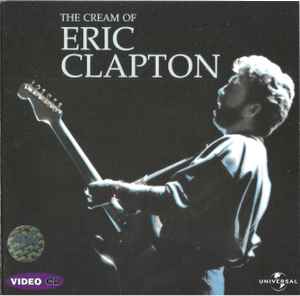 George then recorded a live rendition of “Old Brown Shoe” during his brief tour of Japan in December 1991. His buddy Eric Clapton plays his distictive guitar riff and solo, while famous percussionist Ray Cooper bangs away on tambourine in the background. This vibrant performance appears on the 1992 release “Live In Japan.” George then recorded a live rendition of “Old Brown Shoe” during his brief tour of Japan in December 1991. His buddy Eric Clapton plays his distictive guitar riff and solo, while famous percussionist Ray Cooper bangs away on tambourine in the background. This vibrant performance appears on the 1992 release “Live In Japan.”
Song Structure and Style
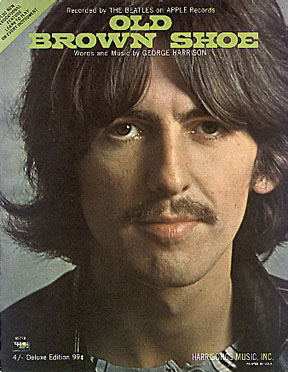 The structure of "Old Brown Shoe" is quite usual for Beatles compositions, namely: 'verse/ verse/ bridge/ instrumental verse/ bridge/ verse' (or aababa). A brief introduction and more lengthy faded conclusion rounds out the format for this song. The structure of "Old Brown Shoe" is quite usual for Beatles compositions, namely: 'verse/ verse/ bridge/ instrumental verse/ bridge/ verse' (or aababa). A brief introduction and more lengthy faded conclusion rounds out the format for this song.
Before the four-measure introduction occurs, Paul plays a quick-rising bass figure that anticipates the downbeat of the first measure of the song. After George's piano performance begins immediately thereafter, Paul repeats his bass line to lead into the third measure, while the fourth measure brings in an anticipatory drum fill from Ringo and George's first lyric “I want a...”
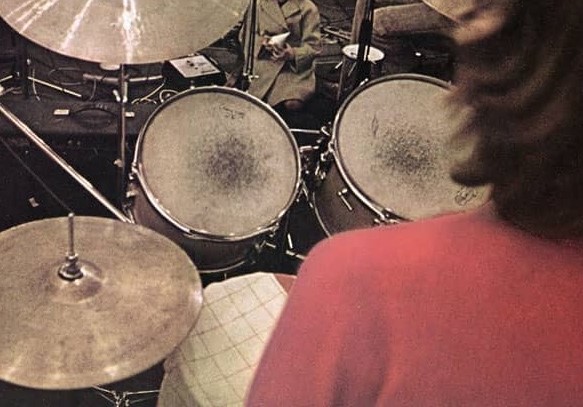 The first verse is an even sixteen measures long and begins with Ringo's cymbal crash on the downbeat of the first measure. He then begins his effective plodding ska drum rhythm that continues throughout the verse, which shows him alternating between a slightly open hi-hat and snare drum beat. He deviates from this only on the seventh, ninth and eleventh measures where he rolls simultaneously on the snare and hi-hat, which he opens wider before hitting a crash cymbal on the downbeat of each following measure. George sings single-tracked throughout while Paul and George's double-tracked lead guitar riffs are placed in the two open spaces in the first eight measures of the verse where he isn't singing. Paul then plays rhythm guitar for the second half of the verse, namely measures nine through sixteen. George continues his piano while Paul maintains his bass patterns throughout the verse, which alter appropriately through the chord changes. The first verse is an even sixteen measures long and begins with Ringo's cymbal crash on the downbeat of the first measure. He then begins his effective plodding ska drum rhythm that continues throughout the verse, which shows him alternating between a slightly open hi-hat and snare drum beat. He deviates from this only on the seventh, ninth and eleventh measures where he rolls simultaneously on the snare and hi-hat, which he opens wider before hitting a crash cymbal on the downbeat of each following measure. George sings single-tracked throughout while Paul and George's double-tracked lead guitar riffs are placed in the two open spaces in the first eight measures of the verse where he isn't singing. Paul then plays rhythm guitar for the second half of the verse, namely measures nine through sixteen. George continues his piano while Paul maintains his bass patterns throughout the verse, which alter appropriately through the chord changes.
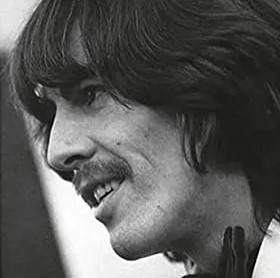 The second verse is virtually identical in instrumentation to the first, although two additional measures are added at the beginning to act as a buffer between the two verses. This makes for an eighteen measure verse this time around, the first two measures being filled with the double-tracked guitar riff. One additional element in this verse is George's overdubbed Hammond organ, which appears in the latter half of the verse, starting in measure eleven. In the eighteenth and final measure, we detect Ringo transistioning from his ska drum pattern to the "shuffle" beat that he plays in the bridge that follows. The second verse is virtually identical in instrumentation to the first, although two additional measures are added at the beginning to act as a buffer between the two verses. This makes for an eighteen measure verse this time around, the first two measures being filled with the double-tracked guitar riff. One additional element in this verse is George's overdubbed Hammond organ, which appears in the latter half of the verse, starting in measure eleven. In the eighteenth and final measure, we detect Ringo transistioning from his ska drum pattern to the "shuffle" beat that he plays in the bridge that follows.
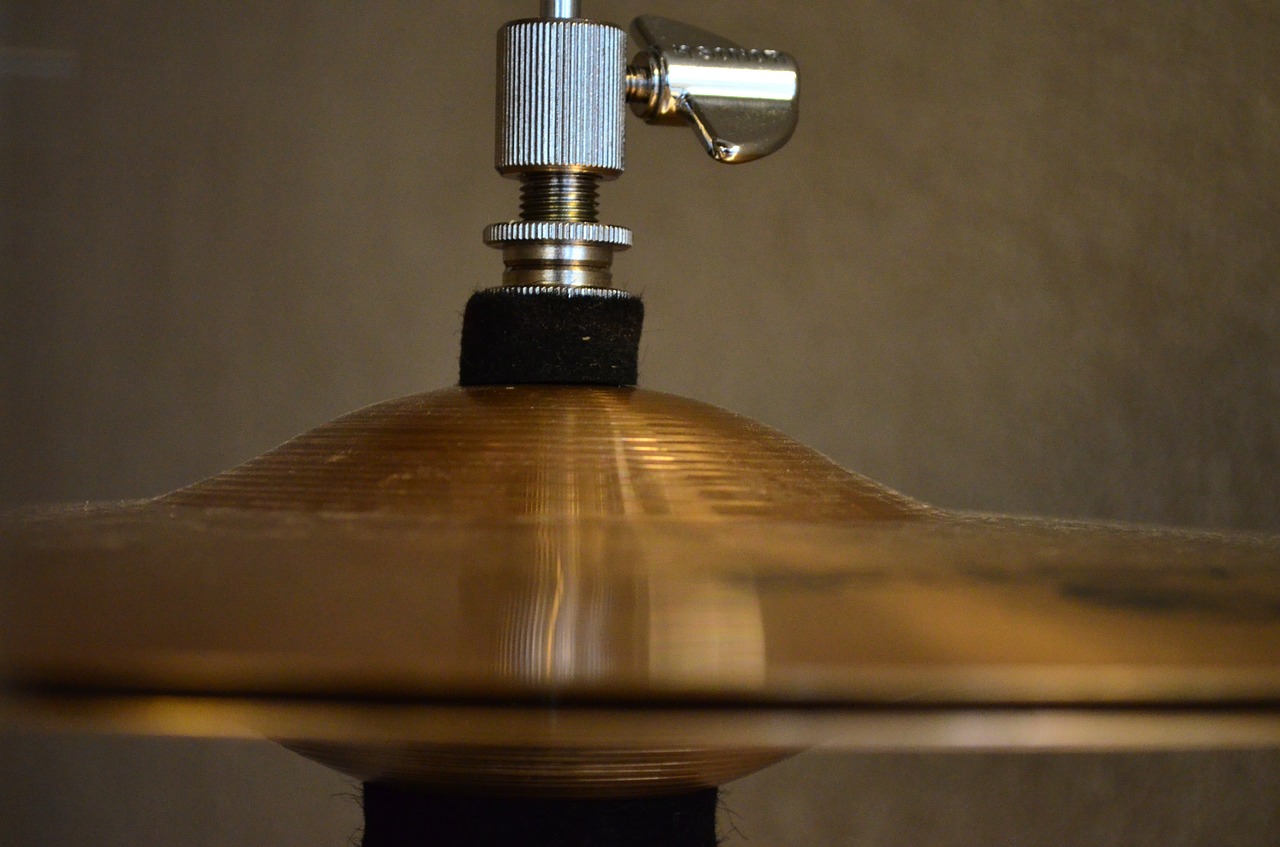 The bridge is twelve measures long and is highlighted by Paul performing bass and guitar overdubs playing the same ascending-and-descending melody pattern in unison throughout. The ska rhythm of the verse is entirely abandoned for the bridge in favor of a "shuffle beat," Ringo riding on a closed hi-hat for its entirety until the twelfth measure where he performs a drum fill to usher in the instrumental verse that follows. John, Paul and George chime in with George's lead vocal for the first time in measures three and four on the lyric “wearing rings on every finger” and then, after George sings lead on the following line, the other Beatles harmonize for the remainder of the bridge. With George's piano rolling on in the background, his overdubbed organ becomes apparent in measure seven and continues to swell in volume for the rest of the bridge, creating an appropriate climax along with Paul's final exclamation “Hey!” The bridge is twelve measures long and is highlighted by Paul performing bass and guitar overdubs playing the same ascending-and-descending melody pattern in unison throughout. The ska rhythm of the verse is entirely abandoned for the bridge in favor of a "shuffle beat," Ringo riding on a closed hi-hat for its entirety until the twelfth measure where he performs a drum fill to usher in the instrumental verse that follows. John, Paul and George chime in with George's lead vocal for the first time in measures three and four on the lyric “wearing rings on every finger” and then, after George sings lead on the following line, the other Beatles harmonize for the remainder of the bridge. With George's piano rolling on in the background, his overdubbed organ becomes apparent in measure seven and continues to swell in volume for the rest of the bridge, creating an appropriate climax along with Paul's final exclamation “Hey!”
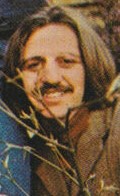 Next comes the instrumental verse which, like the first, is sixteen measures long. The ska rhythm returns with great force with Paul and George repeating their sliding guitar riff four times within the first eight measures. George spices up his piano rhythm by interjecting triplet-like jabs among the ska pattern while Paul moves along nicely on overdubbed bass. George is also present on organ, playing a rhythmic pattern for the first eight measures and then holding out full chords for the remainder of the verse. Measures nine through sixteen feature a searing lead guitar solo from George while Ringo's third drum fill in measure twelve is impressively executed in a sycopated triplet-like fashion similar to what George had previously been performing on piano earlier in this verse. Next comes the instrumental verse which, like the first, is sixteen measures long. The ska rhythm returns with great force with Paul and George repeating their sliding guitar riff four times within the first eight measures. George spices up his piano rhythm by interjecting triplet-like jabs among the ska pattern while Paul moves along nicely on overdubbed bass. George is also present on organ, playing a rhythmic pattern for the first eight measures and then holding out full chords for the remainder of the verse. Measures nine through sixteen feature a searing lead guitar solo from George while Ringo's third drum fill in measure twelve is impressively executed in a sycopated triplet-like fashion similar to what George had previously been performing on piano earlier in this verse.
 The second bridge that follows is a virtual repeat of the first bridge but with different lyrics. One noticeable difference, however, is George's held out organ chords which are heard throughout the entire eight measures this time around. Paul utters a similar “Hey!” at the end of this bridge as well, followed up by yet another subdued “hey” just afterward in the first measure of the fourth verse that follows. The second bridge that follows is a virtual repeat of the first bridge but with different lyrics. One noticeable difference, however, is George's held out organ chords which are heard throughout the entire eight measures this time around. Paul utters a similar “Hey!” at the end of this bridge as well, followed up by yet another subdued “hey” just afterward in the first measure of the fourth verse that follows.
 The fourth verse is twenty measures long this time due to the final four measures being repeated a second time for emphasis. The instrumentation is the same as in the other verses, with George's organ being made very prominent in the mix this time around. An interesting observation is George's lyric “making sure that I'm not late” followed by him exclaiming “Hey” afterwards instead of Paul. When the final lyric is repeated in measures seventeen through nineteen, John and Paul join George with harmony, followed by a “She Loves You”-like “Yeah, yeah, yeah!” from John (?). The fourth verse is twenty measures long this time due to the final four measures being repeated a second time for emphasis. The instrumentation is the same as in the other verses, with George's organ being made very prominent in the mix this time around. An interesting observation is George's lyric “making sure that I'm not late” followed by him exclaiming “Hey” afterwards instead of Paul. When the final lyric is repeated in measures seventeen through nineteen, John and Paul join George with harmony, followed by a “She Loves You”-like “Yeah, yeah, yeah!” from John (?).
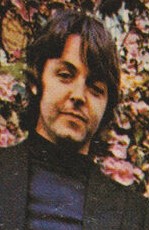 The conclusion comprises the band vamping on the the song's main riff for twenty measures before it fades away. The instrumentation is identical with what has been heard in previous verses with some additional surprises along the way. Paul and George repeat their sliding guitar riffs for the first eight measures and then switch to a bass heavy drone for the remainder of the song, this appearing to be double-tracked to create a noticeable fullness, especially when Paul's bass joins in. George's organ work is very forward in the mix here, nearly drowning out his piano from the rhythm track, while Ringo's drums continue their ska pattern with assorted drum fills scattered throughout. The conclusion comprises the band vamping on the the song's main riff for twenty measures before it fades away. The instrumentation is identical with what has been heard in previous verses with some additional surprises along the way. Paul and George repeat their sliding guitar riffs for the first eight measures and then switch to a bass heavy drone for the remainder of the song, this appearing to be double-tracked to create a noticeable fullness, especially when Paul's bass joins in. George's organ work is very forward in the mix here, nearly drowning out his piano from the rhythm track, while Ringo's drums continue their ska pattern with assorted drum fills scattered throughout.
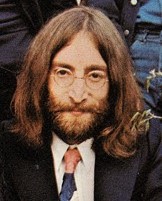 Interestingly, John begins mimicking George's guitar riff in falsetto in the first measure by repeating, “Owww, doo, da, doo,” which prompts Paul to playfully join in with harmony by measure six and thereafter. When the bass drone of the guitars begin in measure nine, these mock falsetto harmonies are brought up in the mix and they stay there until the song eventually fades away. Interestingly, John begins mimicking George's guitar riff in falsetto in the first measure by repeating, “Owww, doo, da, doo,” which prompts Paul to playfully join in with harmony by measure six and thereafter. When the bass drone of the guitars begin in measure nine, these mock falsetto harmonies are brought up in the mix and they stay there until the song eventually fades away.
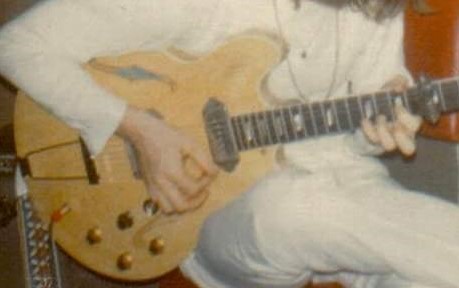 For those who assert that The Beatles were so fragmented during their final couple of years that they were dreading being in the studio together at all, there is absolutely no evidence of this on “Old Brown Shoe.” This full band recording, including John despite his alleged guitar part being wiped, displays all four of them having an enjoyable time. All three singers give in to joyful shouts during their vocal tracks, Ringo's drums are steady, exuberent and flawless, and Paul's bass work shows he was putting his all into the session. George, of course, is in his element, putting in great performances on piano and organ, not to mention his vibrant guitar solo that has a commanding presence. “Old Brown Shoe” stands tall among the later Beatles' rockers. For those who assert that The Beatles were so fragmented during their final couple of years that they were dreading being in the studio together at all, there is absolutely no evidence of this on “Old Brown Shoe.” This full band recording, including John despite his alleged guitar part being wiped, displays all four of them having an enjoyable time. All three singers give in to joyful shouts during their vocal tracks, Ringo's drums are steady, exuberent and flawless, and Paul's bass work shows he was putting his all into the session. George, of course, is in his element, putting in great performances on piano and organ, not to mention his vibrant guitar solo that has a commanding presence. “Old Brown Shoe” stands tall among the later Beatles' rockers.
American Releases
On June 4th, 1969, Apple Records released a new Beatles single in the US, “The Ballad Of John And Yoko” backed with “Old Brown Shoe.” While Beatles' fans were inundated with singles on the charts in 1964, even occupying the entire top five positions on the Billboard Hot 100 in April of that year, it was quite unusual by 1969 standards to have more than one single by the group in the charts at the same time. “Get Back / Don't Let Me Down” had just been released on May 5th, their previous single “Hey Jude” having been released more than eight months earlier.
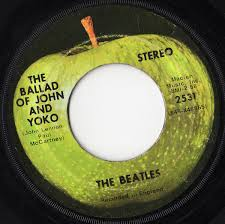 However, although “Get Back” was occupying the #1 position on the American Billboard Hot 100, John insisted on releasing his autobiographical “Ballad Of John And Yoko” as soon as possible to chronicle their recent exploits before it was old news. That being the case, John's song got all of the attention and peaked at #8 on the Billboard Hot 100, while George's most impressive “Old Brown Shoe” unfortunately failed to make the chart at all. However, although “Get Back” was occupying the #1 position on the American Billboard Hot 100, John insisted on releasing his autobiographical “Ballad Of John And Yoko” as soon as possible to chronicle their recent exploits before it was old news. That being the case, John's song got all of the attention and peaked at #8 on the Billboard Hot 100, while George's most impressive “Old Brown Shoe” unfortunately failed to make the chart at all.
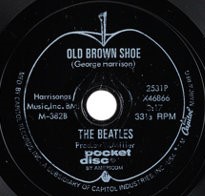 The "Ballad Of John And Yoko / Old Brown Shoe" single was also made available in a new format called "Pocket Discs." These four inch flexible discs were manufactured by Americom Corporation in New York and made available to consumers either from store counter displays or vending machines for 50 cents. While it was claimed that the sound quality of these thin flexible discs were every bit as good as vinyl, the shallow grooves could not contain the same amount of audible information. Interestingly, the label on this release states "Prod. by W. Miller" instead of George Martin as on the "Hey Jude" pocket disc. This is undoubtedly a reference to Bill Miller, Capitol's handler of foreign artists. Beatles "Pocket Discs" are highly collectible today. The "Ballad Of John And Yoko / Old Brown Shoe" single was also made available in a new format called "Pocket Discs." These four inch flexible discs were manufactured by Americom Corporation in New York and made available to consumers either from store counter displays or vending machines for 50 cents. While it was claimed that the sound quality of these thin flexible discs were every bit as good as vinyl, the shallow grooves could not contain the same amount of audible information. Interestingly, the label on this release states "Prod. by W. Miller" instead of George Martin as on the "Hey Jude" pocket disc. This is undoubtedly a reference to Bill Miller, Capitol's handler of foreign artists. Beatles "Pocket Discs" are highly collectible today.
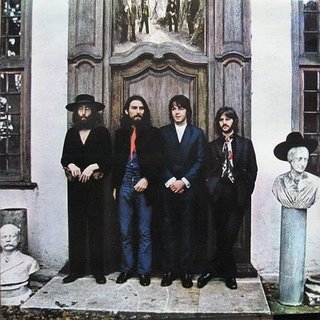 The first album to contain the song in the US was “Hey Jude” (originally titled “The Beatles Again”). This was released on February 26th, 1970 and was the fourth American Beatles album on Apple Records. A #2 placing on the Billboard album chart for a compilation release was not too shabby. This album received a compact disc release on January 21st, 2014. The first album to contain the song in the US was “Hey Jude” (originally titled “The Beatles Again”). This was released on February 26th, 1970 and was the fourth American Beatles album on Apple Records. A #2 placing on the Billboard album chart for a compilation release was not too shabby. This album received a compact disc release on January 21st, 2014.
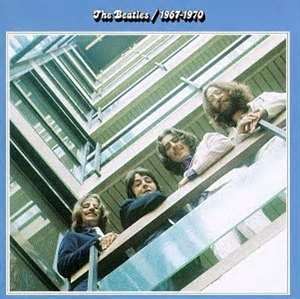 Next came “The Beatles/1967-1970” (aka “The Blue Album”), the second of a pair of official “greatest hits” packages released in America at the time. This double album was released on April 19th, 1973, peaking at #1 on the Billboard album chart. Although “Old Brown Shoe” did not chart in either Britain or America as a single, it found a suitable home on this well-received compilation album. Many fans were anxious to read the lyrics of this song on the inner sleeve since George's vocals were quite indecipherable on the recording at that time. This collection was released on compact disc on September 20th, 1993, the remastered version then released on August 10th, 2010. Next came “The Beatles/1967-1970” (aka “The Blue Album”), the second of a pair of official “greatest hits” packages released in America at the time. This double album was released on April 19th, 1973, peaking at #1 on the Billboard album chart. Although “Old Brown Shoe” did not chart in either Britain or America as a single, it found a suitable home on this well-received compilation album. Many fans were anxious to read the lyrics of this song on the inner sleeve since George's vocals were quite indecipherable on the recording at that time. This collection was released on compact disc on September 20th, 1993, the remastered version then released on August 10th, 2010.
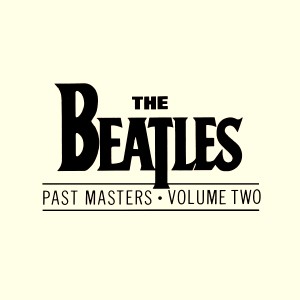 The compact disc era included “Old Brown Shoe” on a compilation entitled “Past Masters, Volume Two,” which was released on March 7th, 1988. For the vinyl edition of this album, it was decided to combine both volumes of "Past Masters" into a double-album, this being released on October 24th, 1988. It was then decided to continue the double-album concept for both the CD and vinyl remastered re-release of this title, the 2-CD set coming out on September 9th, 2009 and the vinyl double-album coming out on November 12th, 2012. The compact disc era included “Old Brown Shoe” on a compilation entitled “Past Masters, Volume Two,” which was released on March 7th, 1988. For the vinyl edition of this album, it was decided to combine both volumes of "Past Masters" into a double-album, this being released on October 24th, 1988. It was then decided to continue the double-album concept for both the CD and vinyl remastered re-release of this title, the 2-CD set coming out on September 9th, 2009 and the vinyl double-album coming out on November 12th, 2012.
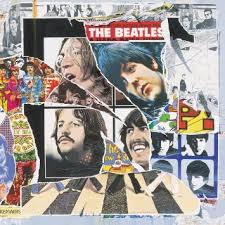 George's solo demo of "Old Brown Shoe," as recorded on February 25th, 1969 and described above, was released in all of its glory on the compilation album "Anthology 3" on October 28th, 1996. George Martin couldn't resist including all three of George's excellent demos that he recorded on his 26th birthday, "All Things Must Pass" and "Something" included, on this compilation, feeling the world needed to hear the intricacy and beauty of all three. George's solo demo of "Old Brown Shoe," as recorded on February 25th, 1969 and described above, was released in all of its glory on the compilation album "Anthology 3" on October 28th, 1996. George Martin couldn't resist including all three of George's excellent demos that he recorded on his 26th birthday, "All Things Must Pass" and "Something" included, on this compilation, feeling the world needed to hear the intricacy and beauty of all three.
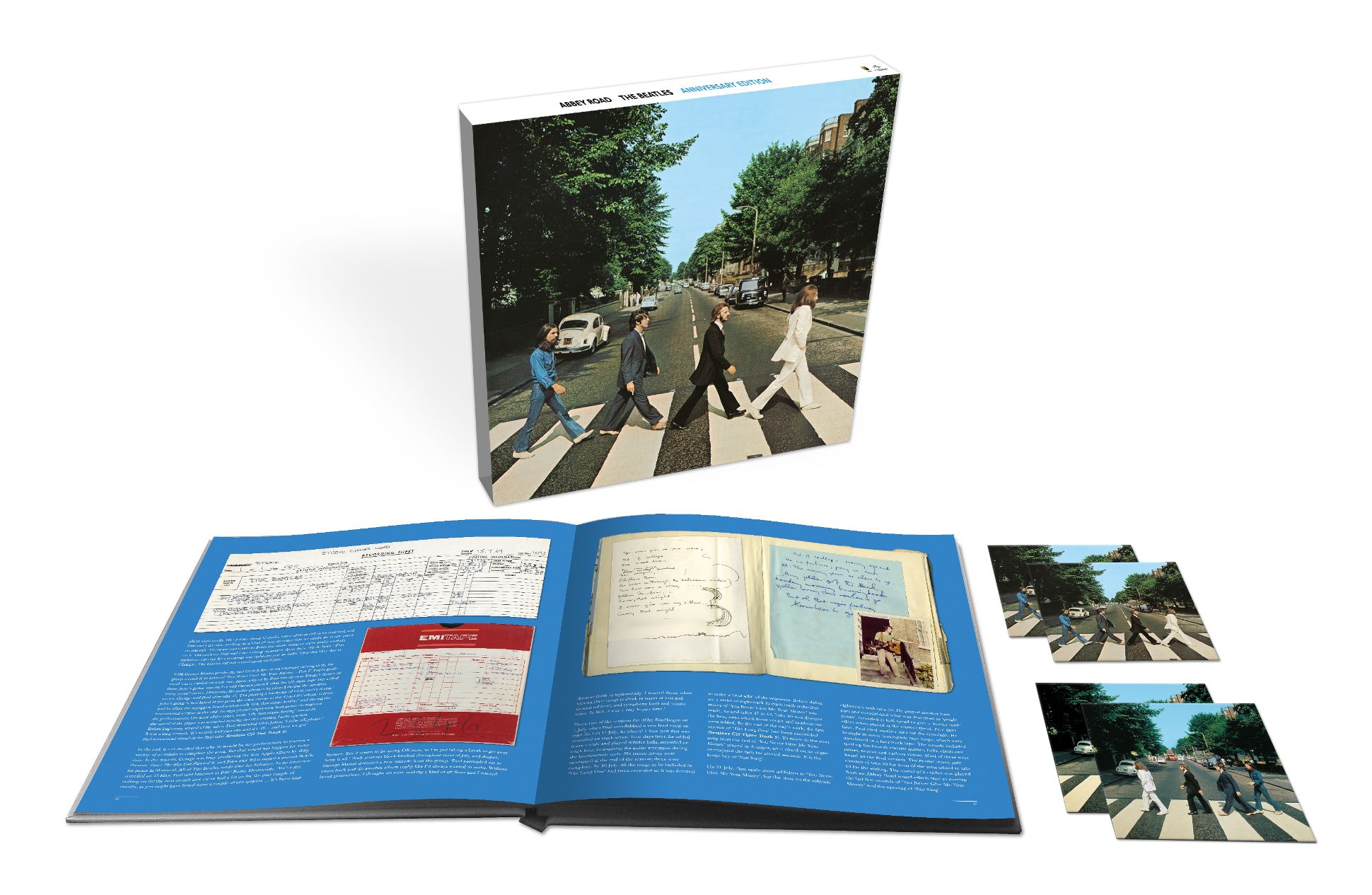 “Take two” of “Old Brown Shoe,” as recorded on April 16th, 1969 in EMI Studio Three, was included on the September 27th, 2019 released “'Abbey Road' 50th Anniversary Super Deluxe Edition” as well as the "Triple Vinyl" edition. The song may not have been considered for inclusion on the original album, but it was recorded within the time period that the rest of the “Abbey Road” tracks were set to tape, which warranted its inclusion within these well-received sets. “Take two” of “Old Brown Shoe,” as recorded on April 16th, 1969 in EMI Studio Three, was included on the September 27th, 2019 released “'Abbey Road' 50th Anniversary Super Deluxe Edition” as well as the "Triple Vinyl" edition. The song may not have been considered for inclusion on the original album, but it was recorded within the time period that the rest of the “Abbey Road” tracks were set to tape, which warranted its inclusion within these well-received sets.
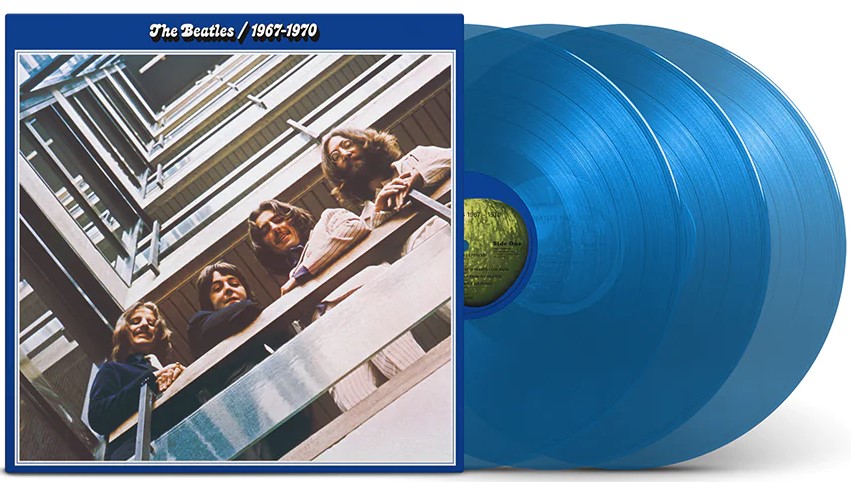 A 50th Anniversay edition of the compilation album "The Beatles / 1967 - 1970" (aka "The Blue Album") was released on November 10th, 2023, the Giles Martin stereo mix of "Old Brown Shoe" as detailed above, being included. This expanded release included 12 additional songs for a total of 38 tracks, and was made available as a double CD and as a triple vinyl release on both black and blue vinyl. A 50th Anniversay edition of the compilation album "The Beatles / 1967 - 1970" (aka "The Blue Album") was released on November 10th, 2023, the Giles Martin stereo mix of "Old Brown Shoe" as detailed above, being included. This expanded release included 12 additional songs for a total of 38 tracks, and was made available as a double CD and as a triple vinyl release on both black and blue vinyl.
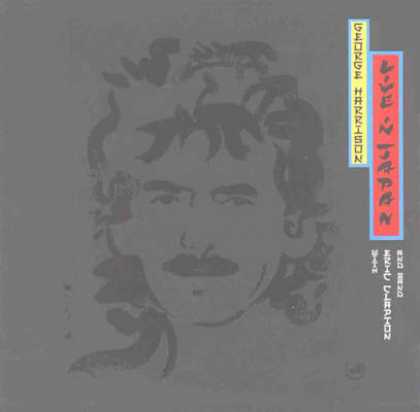 Not to be forgotten is George Harrison's live version of “Old Brown Shoe” from December of 1991 that was included on his double-album “Live In Japan.” This album was released on July 13th, 1992 and, unfortunately, only reached #126 on the Billboard album chart. Not to be forgotten is George Harrison's live version of “Old Brown Shoe” from December of 1991 that was included on his double-album “Live In Japan.” This album was released on July 13th, 1992 and, unfortunately, only reached #126 on the Billboard album chart.
Live Performances
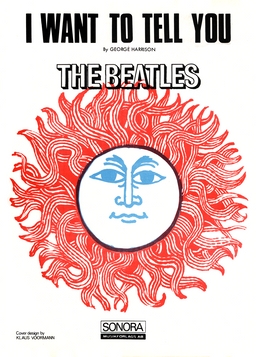 While The Beatles never performed “Old Brown Shoe” on any stage, George Harrison thought to include the song during his brief 1991 Japanese tour, which ran from December 1st to 17th of that year. After starting off his set with his Beatles “Revolver” track “I Want To Tell You,” he delved right into “Old Brown Shoe” as the celebrated second song at each concert. Luckily, a live recording of this song was made to preserve the event, the results being included on the above mentioned “Live In Japan” album. While The Beatles never performed “Old Brown Shoe” on any stage, George Harrison thought to include the song during his brief 1991 Japanese tour, which ran from December 1st to 17th of that year. After starting off his set with his Beatles “Revolver” track “I Want To Tell You,” he delved right into “Old Brown Shoe” as the celebrated second song at each concert. Luckily, a live recording of this song was made to preserve the event, the results being included on the above mentioned “Live In Japan” album.
George also featured the above set list, including “Old Brown Shoe,” in a live concert at the Royal Albert Hall on April 6th, 1992, this being a benefit for the Natural Law Party. It was the last live George Harrison concert.
Conclusion
In retrospect, one can see how "Old Brown Shoe" displays George Harrison's growing confidence in himself as a songwriter. While he appears to have only written a small handful of songs per year throughout his early Beatles career, especially in comparison to Lennon and McCartney, 1968 shows a spike in his compositional output, regardless of how many of his songs actually made it onto a coveted Beatles album or, in this case, single.
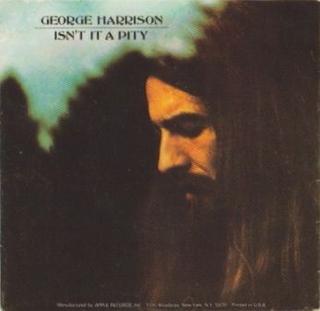 For instance, five Harrison songs were included on 1968 Beatles' releases, but many others were being readied for John and Paul's approval. “Something,” “All Things Must Pass,” “Hear Me Lord,” “Let It Down,” “Isn't It A Pity,” “The Art Of Dying,” "Not Guilty," “I Me Mine,” “For You Blue,” “Sour Milk Sea,” “Circles,” “Get Your Rocks Off,” “Hey Hey Georgie,” “How Do You Tell Someone,” “It Is Discovered,” “Maureen,” “Ramblin' Woman,” “Nowhere To Go,” “Dehradun,” “Window Window” and “Old Brown Shoe” are all examples of songs that George had been developing for consideration by The Beatles during 1968 and early 1969. Only a small handful of these songs were chosen, of course, others being developed further for George's solo career in the near future. Harrison, however, had especially strong feelings about “Old Brown Shoe,” which he pushed hard for his band to record. For instance, five Harrison songs were included on 1968 Beatles' releases, but many others were being readied for John and Paul's approval. “Something,” “All Things Must Pass,” “Hear Me Lord,” “Let It Down,” “Isn't It A Pity,” “The Art Of Dying,” "Not Guilty," “I Me Mine,” “For You Blue,” “Sour Milk Sea,” “Circles,” “Get Your Rocks Off,” “Hey Hey Georgie,” “How Do You Tell Someone,” “It Is Discovered,” “Maureen,” “Ramblin' Woman,” “Nowhere To Go,” “Dehradun,” “Window Window” and “Old Brown Shoe” are all examples of songs that George had been developing for consideration by The Beatles during 1968 and early 1969. Only a small handful of these songs were chosen, of course, others being developed further for George's solo career in the near future. Harrison, however, had especially strong feelings about “Old Brown Shoe,” which he pushed hard for his band to record.
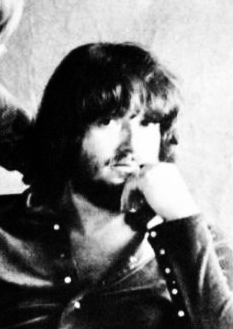 Also interesting is his “undercurrent of bottleneck,” as author Alan Clayson describes George's repeating guitar riff in the song. Harrison became known for his use of slide guitar during his solo career, this being developed after he was introduced to this technique by Delaney Bramlett during George's stint as backing guitarist for Delaney & Bonnie in late 1969. “Old Brown Shoe,” therefore, showcases George's early development of slide guitar playing, although he didn't use an actual slide device in the studio until The Beatles broke up. Also interesting is his “undercurrent of bottleneck,” as author Alan Clayson describes George's repeating guitar riff in the song. Harrison became known for his use of slide guitar during his solo career, this being developed after he was introduced to this technique by Delaney Bramlett during George's stint as backing guitarist for Delaney & Bonnie in late 1969. “Old Brown Shoe,” therefore, showcases George's early development of slide guitar playing, although he didn't use an actual slide device in the studio until The Beatles broke up.
Song Summary
“Old Brown Shoe”
Written by: George Harrison
- Song Written: November, 1968 through January 26, 1969
- Song Recorded: April 16 & 18, 1969
- First US Release Date: June 4, 1969
- US Single Release: Apple #2531 (b-side to “The Ballad Of John And Yoko”)
- Highest Chart Position: n/a
- First US Album Release: Apple #SW-385 “Hey Jude”
- British Album Release: Apple #SKBO-3404 “1967-1970”
- Length: 3:17
- Key: C major
- Producer: George Martin, Chris Thomas
- Engineers: Jeff Jarratt, Richard Lush, John Kurlander
Instrumentation (most likely):
- George Harrison - Lead Vocals, Piano (1964 Challen "Jangle Box" upright 681834), Lead Guitar (1968 Fender Rosewood Telecaster), Organ (Hammond RT-3)
- Paul McCartney - Guitar (1962 Epiphone ES-230TD Casino), Bass (1966 Fender Jazz Bass), backing vocals
- John Lennon - Backing Vocals
- Ringo Starr - Drums (1968 Ludwig Hollywood Maple)
Written and compiled by Dave Rybaczewski
|
IF YOU WOULD LIKE TO MAKE A DONATION TO KEEP THIS WEBSITE UP AND RUNNING, PLEASE CLICK BELOW!
Sign Up Below for our MONTHLY BEATLES TRIVIA QUIZ!
|